The Sounds and Images of Black Power Take Center Stage in This Post-Civil Rights Exhibition
After Martin Luther King Jr.’s assassination, black leaders and cultural influencers encouraged community self-reliance and pride
/https://tf-cmsv2-smithsonianmag-media.s3.amazonaws.com/filer/03/69/03696b68-3ccd-4ca8-b7b0-2bc463fce690/changing_americablk.jpg)
By the time Martin Luther King Jr. was assassinated in 1968, a new radical form of activism had taken residence in the minds of young African-Americans around the country. Departing from the integrationist ideals of King’s cohort, then-25-year-old Stokely Carmichael coined the phrase “Black Power,” which he defined in his seminal work Black Power: The Politics of Liberation as “a call for black people in this country to unite, to recognize their heritage, to build a sense of community. It is a call for black people to define their own goals, to lead their own organizations.”
Bill Pretzer, senior curator at the National Museum of African American History and Culture used the Black Power movement as the foundation for the museum’s inaugural exhibition “A Changing America: 1968 and Beyond.”
“It is a continuation of the black liberation movement. The black freedom struggle of which the modern civil rights movement was also a part. It’s not some foreign entity, it’s part and parcel of that movement,” says Pretzer, who co-curated the exhibition with Michelle Wilkinson.
The exhibition begins with King’s assassination and highlights the Poor People’s Campaign’s Resurrection City on the National Mall, but the assassination serves as a turning point for the rest of the show with the rise of the Black Power movement and its varying manifestations—the Black Panther Party, the Black Arts Movement and the cultural expression “Black is Beautiful.”
In discussing the Black Panther Party, the curators chose to focus on the social programs enacted by the party rather than the self-defense programs that encouraged the outsider’s perception of the group as militant and violent. The social programs, called “survival programs,” resisted the ideas of integration and urged a lifestyle of self-reliance for the black community.
A registration form for the “Black Community Survival Conference” of 1972 advertising free groceries through the Free Food Program is one of the artifacts on view. The Panthers’ other programs included ambulance services, health clinics and free breakfast programs for school children.

The Black Power movement encouraged pride in the African-American community, as well as pride in the self and the physical appearance. The phrase “Black is Beautiful” is printed in large bold letters on the wall next to an equally bold image of a woman sporting an afro, an example of the developing “black aesthetic” born in this era.
“There was an idea that African-Americans needed to conform in terms of their appearance to standards of beauty that did not validate what many of them looked like. So black aesthetic, broadly speaking, was a way to value style, features, hair, clothing, things that African-Americans were making decisions about,” says Wilkinson.
Two afro picks—one is a typical comb with metal teeth and a black plastic handle, and the other a wooden carving from Ghana—symbolize the role of African heritage in the development of the black aesthetic, and the assertion of the once unwelcome notion that to be black really is beautiful.
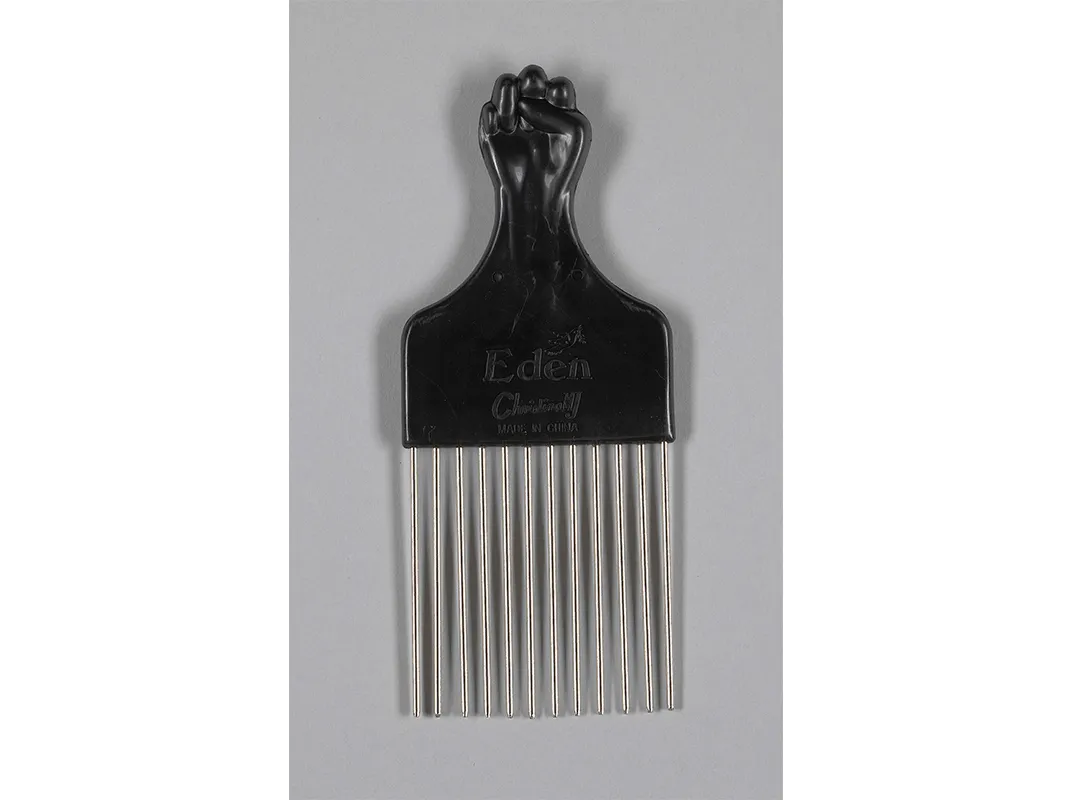
In his review of the movement, which included artists of various mediums from writers to dramatists, scholar Larry Neal wrote “this movement is the aesthetic and spiritual sister of the Black Power concept. As such, it envisions an art that speaks directly to the needs and aspirations of Black America.” Faith Ringgold, an artist known for her story quilts, used her art to call for the release of activist Angela Davis, who was imprisoned at that time. Her poster reads “Free Angela” in triangles inspired by a Congolese art aesthetic.
“During this time visual artists were looking for ways to express this “black aesthetic,” says Wilkinson.
A section on other ethnic movements such as the Chicano movement and the Native American “Longest Walk,” recall that the influence of the Black Power movement radiated beyond the black community.
In a small cramped area is a series on urban life after the Civil Rights movement. “It’s very truncated, it’s very small. You’re really packed in like in a city. It’s dense. Museum exhibits are always kinetic as well as visual,” says Pretzer.
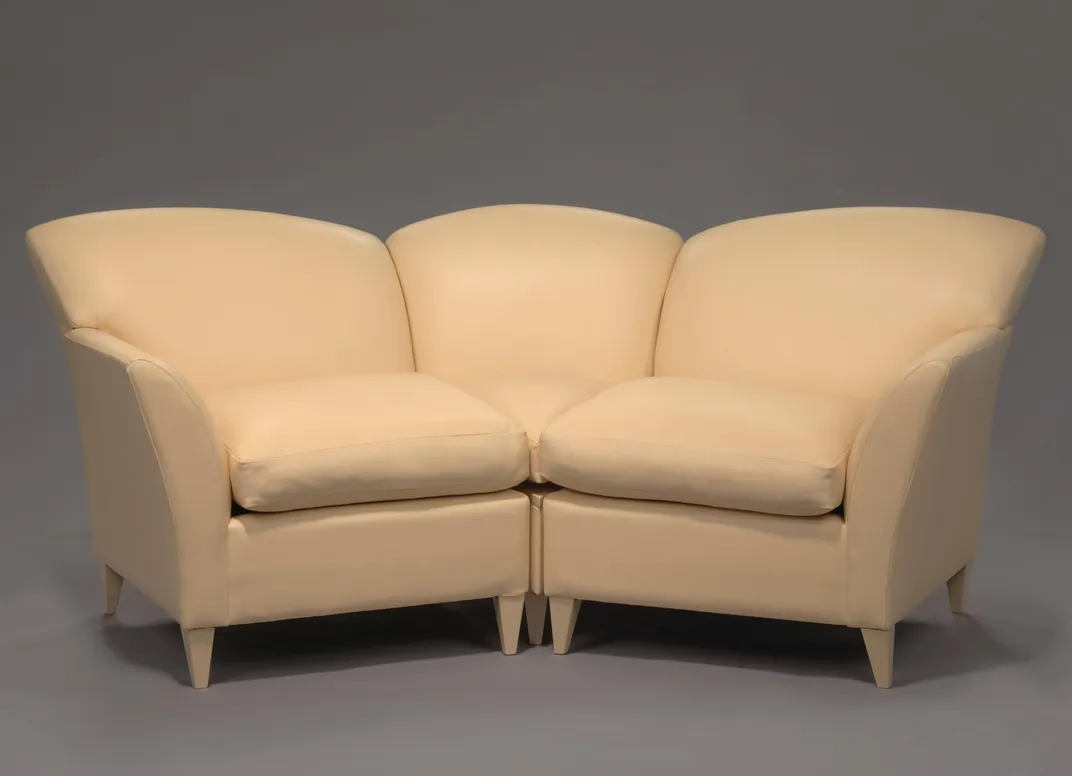
Major political and cultural moments from the decades after the rise of the Black Power movement up through the current day expand on the exhibition’s perspective. Oprah Winfrey, who became a household name in the mid-1980s with her highly rated talk show, donated several items to the museum. A couch and audience seating from her show’s set, and the dress she wore during the show’s last episode touch on the talk show host’s cultural influence as she carved a place for herself in the mainstream media. A red banner with black letters advertises Public Enemy, the politically active hip-hop group, led by rappers Chuck D and Flavor Flav, whose track “Fight the Power” was featured in Spike Lee’s 1989 Do the Right Thing.
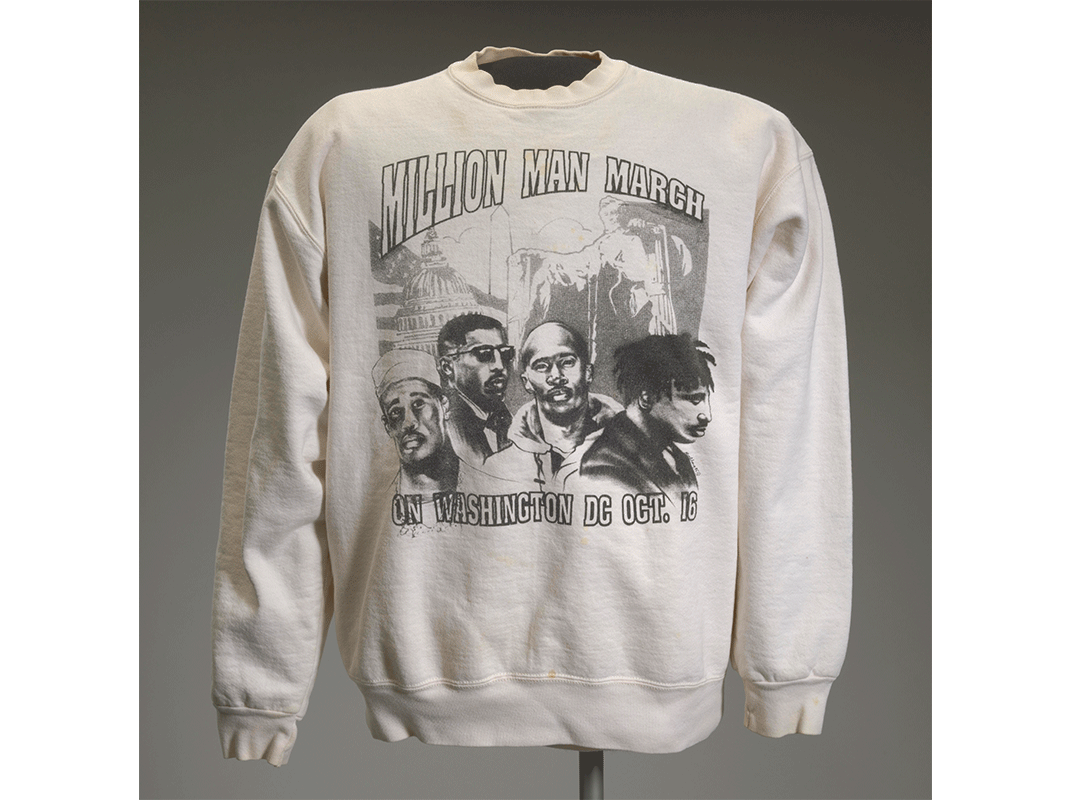
A sweatshirt from the 1995 Million Man March, the 1996 Olympic torch carried by nine-time Olympic medalist Carl Lewis, and a pin declaring “I believe Anita” from the Anita Hill case, are a few of the touchstone artifacts from the 1990s.
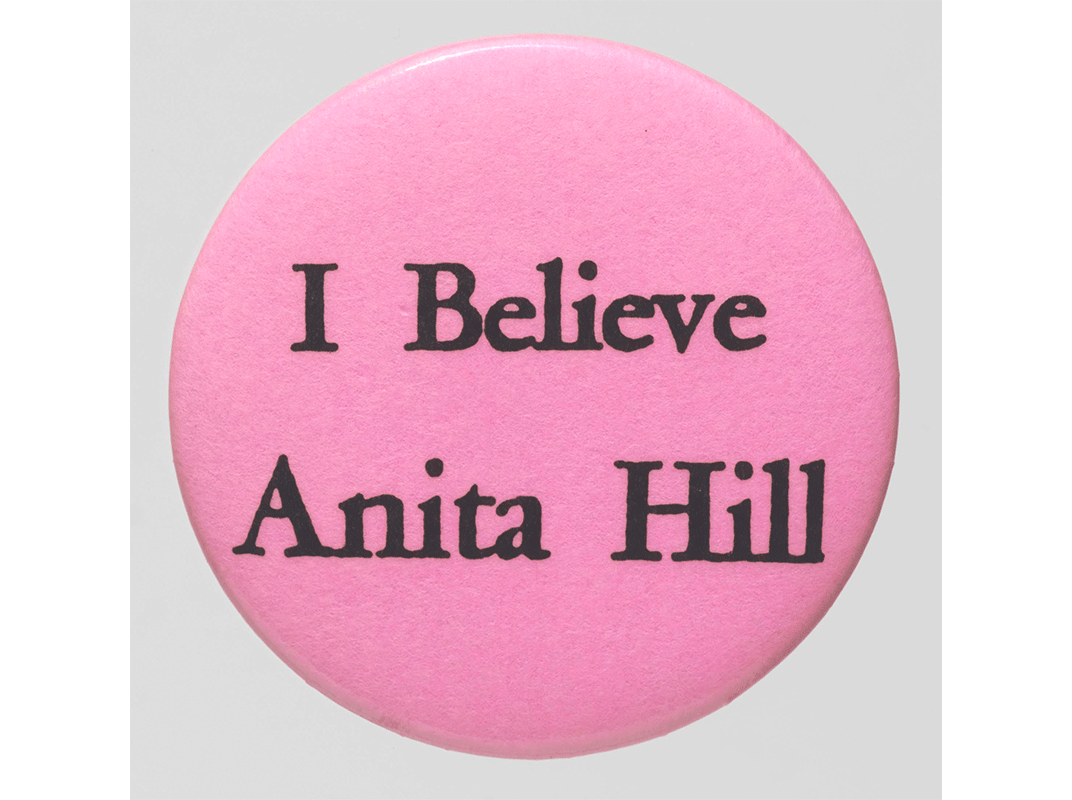
Continuing into the 2000s, a video and photo display chronicles major moments in African-American history, including the sensational moment when Halle Berry became the first African-American woman to win an Oscar for Best Actress in 2002, the same year Denzel Washington won the Oscar for Best Actor.
Political ascendency is marked when both General Colin Powell and Condoleeza Rice took posts in the White House during the George W. Bush presidency, but are overshadowed by artifacts that recall difficult moments from this period. A single object—a metal basket used to rescue people stranded in floodwaters—speaks to the disproportionate damage of Hurricane Katrina on African-American communities in the south.

The Barack Obama presidency is a story told with buttons, campaign flyers and magazine covers to memorialize the current president’s historic election, along with designer Tracy Reese’s black and red dress that Michelle Obama wore at the 50th-anniversary celebration of the March on Washington in 2013.
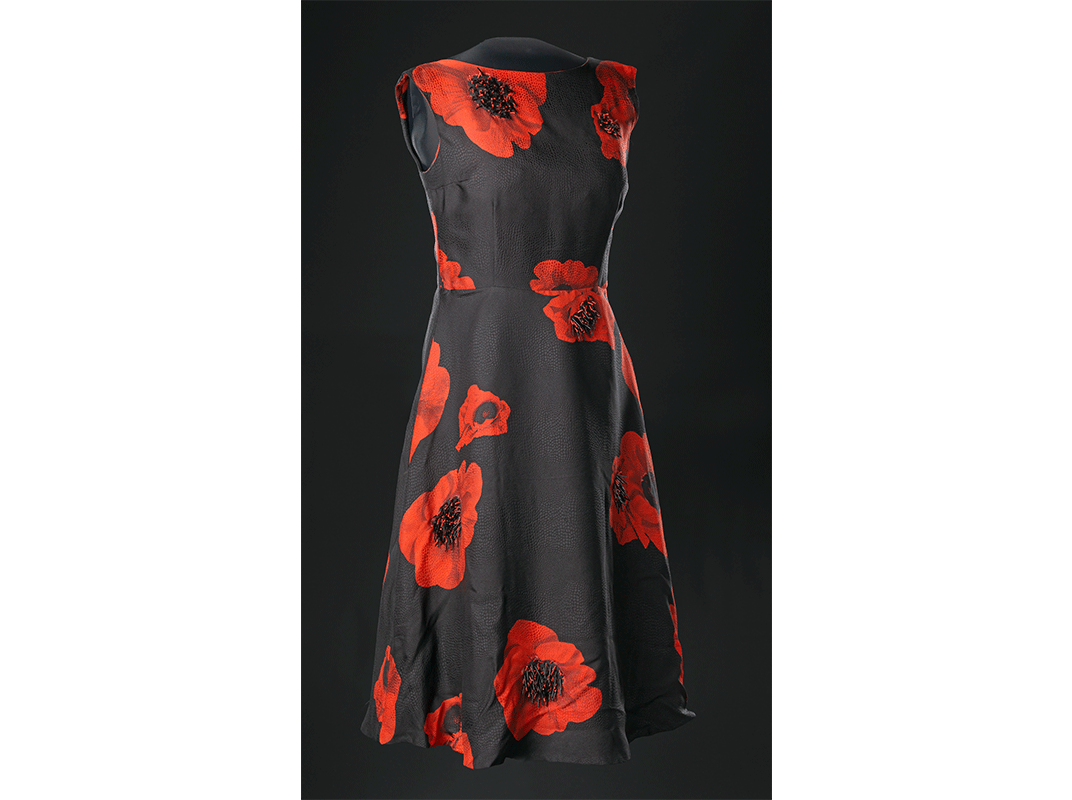
While the Obama era serves as the final point for the history galleries, the thread of activism returns at the end of the exhibition with artifacts, such as a T-shirt, from the Black Lives Matter protests of the past three years. Curators began collecting items from the protests in Baltimore after 25-year-old Freddie Gray died during transport in a police vehicle.
“When you think about Black Lives Matter and what issues they’re created to respond to and the solutions or the actions that they want. You can compare them to the Black Power movement,” says Pretzer.
"A Changing America: 1968 and Beyond" is a new inaugural exhibition on view in the National Museum of African American History and Culture. Timed-entry passes are now available at the museum's website or by calling ETIX Customer Support Center at (866) 297-4020. Timed passes are required for entry to the museum and will continue to be required indefinitely.
/https://tf-cmsv2-smithsonianmag-media.s3.amazonaws.com/accounts/headshot/DSC_0154.JPG.jpeg)


/https://tf-cmsv2-smithsonianmag-media.s3.amazonaws.com/accounts/headshot/DSC_0154.JPG.jpeg)